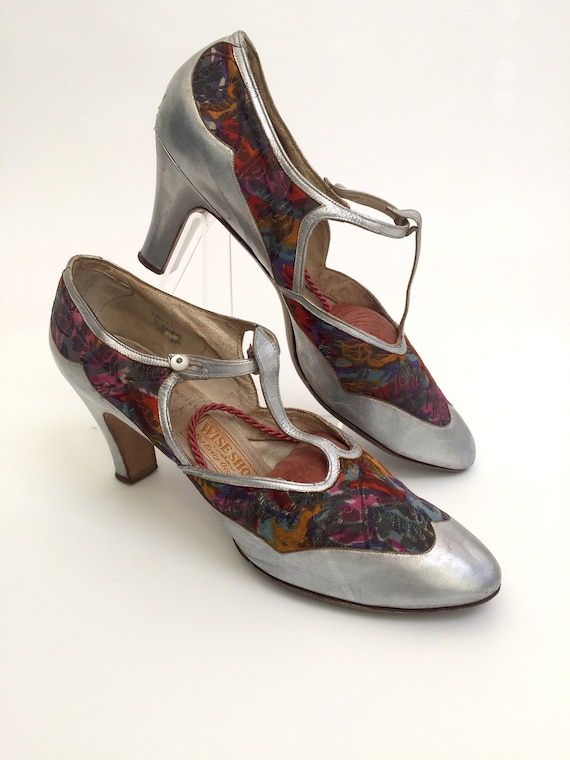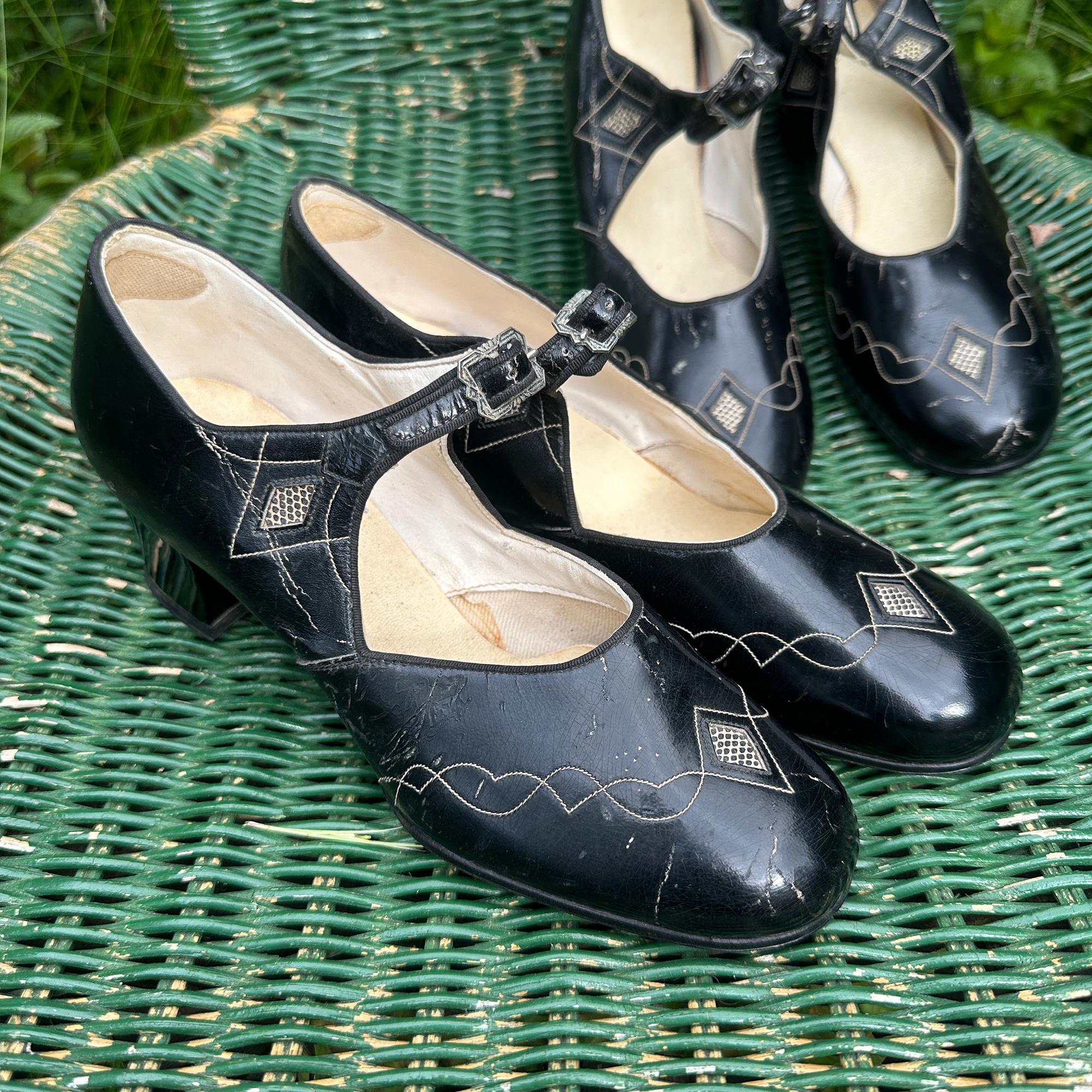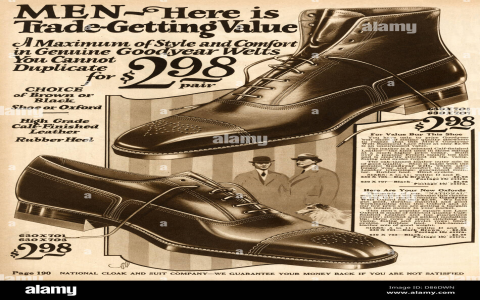You know, this whole 1920s shoe thing didn’t just pop into my head outta nowhere. I’ve always been a bit obsessed with that era, the style, the whole vibe. But actually making a pair of shoes from that time? That was a whole different kettle of fish. It all started when my cousin announced she was having a massive Roaring Twenties themed wedding. And when I say massive, I mean everyone had to be decked out, top to toe.

I got most of my outfit sorted pretty quick – found a decent suit, a natty tie, even a fedora that didn’t look too costume-y. But the shoes, man, the shoes were the kicker. Try finding authentic-looking 1920s men’s shoes that don’t cost the earth or look like they’re made of cardboard. It’s a real pain. I looked everywhere, online, vintage shops, the lot. Nothing felt right. Everything was either too modern or just plain ugly.
So, I’m grumbling about this to myself, getting pretty stressed, and then this wild idea just hits me: “Why don’t I just try and make them?” Yeah, I know, sounds a bit nuts, right? My crafting skills usually max out at putting together flat-pack furniture, and even that’s a struggle sometimes. But the idea wouldn’t leave me alone. I figured, how hard can it be? Famous last words, let me tell you.
Diving Headfirst into Old-School Shoemaking
So, I committed. I was going to make these 1920s shoes. First things first, I needed to figure out what I was even aiming for. I spent a good few evenings just trawling through old pictures, movie clips, anything from the 20s. Lots of Oxfords, some two-tones, spats were a thing but I wasn’t going that far. I settled on a classic cap-toe Oxford design. Seemed doable, looked sharp.
Then, the materials. This was an adventure in itself. It’s not like you can just pop down to the local store and pick up shoemaking supplies. I ended up finding a place online that sold leather offcuts, which I thought would be perfect for a beginner like me – less waste if I messed up, which, spoiler alert, I did. A lot. I got some fairly sturdy stuff for the soles and some more pliable leather for the uppers. I also had to gather a bunch of other bits and bobs:
- Super strong glue. The kind you probably shouldn’t sniff too much.
- An awl – basically a pointy metal stick for making holes in the leather.
- Some really tough thread and needles that wouldn’t snap.
- A very, very sharp craft knife. My fingers still have nightmares.
- And heels. I actually managed to pry some off an old pair of dress shoes that were falling apart. Resourceful, eh?
Next up was the pattern. This is where I really started to feel out of my depth. I’m no tailor, let alone a cordwainer. I couldn’t find any simple free patterns online that looked right. So, I improvised. I took an old pair of shoes that fit reasonably well, wrapped them entirely in masking tape, and then carefully drew the different panel shapes onto the tape. Then I peeled it all off, laid it flat, and voilà – my very own, very janky, shoe pattern. It was rough, but it was a start.

Cutting out the leather pieces was next. This required a lot of patience and a steady hand. One wrong slip with that knife and the whole piece was toast. I laid out my taped patterns on the leather and painstakingly cut around them. Got all the bits for the uppers – the vamp (that’s the front bit), the quarters (the sides), the toe cap. Slowly, it started to vaguely resemble parts of a shoe.
Then came the stitching. Oh, the stitching. My hands were aching after about ten minutes. Pushing a needle through leather, even with pre-poked holes from the awl, is serious work. I did it all by hand, every single stitch. It took ages. I slowly sewed the upper pieces together. It wasn’t the neatest job, some stitches were a bit wobbly, but it held. It looked like a floppy leather sock at this point.
Now for the tricky part – giving it some actual shoe shape. Real shoemakers use these wooden foot-shaped things called ‘lasts’. I, of course, didn’t have any of those. So, improvisation station again! I stuffed the sewn uppers really tightly with old newspapers, trying to mould them into something resembling a foot. Then I lightly dampened the leather and let it dry like that, hoping it would hold the shape. It sort of worked, in a lumpy kind of way.
Attaching the soles and heels was a sticky, messy business. Lots and lots of that super strong glue. I coated the bottom of my newspaper-stuffed uppers and the leather soles I’d cut out. Then I pressed them together with all my might, using a load of heavy books and some clamps I borrowed to keep everything tight while it dried. Did the same for the heels. It wasn’t exactly a precision job, but they stuck.
After letting everything dry for what felt like an eternity, I did some final touches. Trimmed off any raggedy edges of leather, tried to give them a bit of a polish with some shoe cream, and threaded in some laces. They definitely looked… handmade. Very handmade. A bit rustic, you could say.

So, the big day of the wedding arrived. How did they hold up? Well, they weren’t going to win any shoemaking awards, that’s for sure. They were a bit uneven, one felt a tiny bit looser than the other. But they were shoes! And they vaguely resembled 1920s Oxfords! I actually wore them for the whole event. My feet were pretty sore by the end of the night, not gonna lie, but it was worth it. I even got a few people asking where I got them, and when I said I made them, they were pretty amazed. Or maybe just polite.
It was a massive undertaking, far more complicated and time-consuming than I ever imagined. And the final product was far from perfect. But I learned a ton. Mostly, I learned that proper shoemakers are actual wizards and totally deserve every penny they charge. Would I do it again? Hmm, maybe if I had a lot more time and proper tools. For now, I think I’ll stick to admiring vintage fashion from afar, and maybe leave the shoemaking to the pros. But hey, I can say I made a pair of shoes, right?

